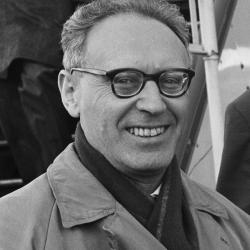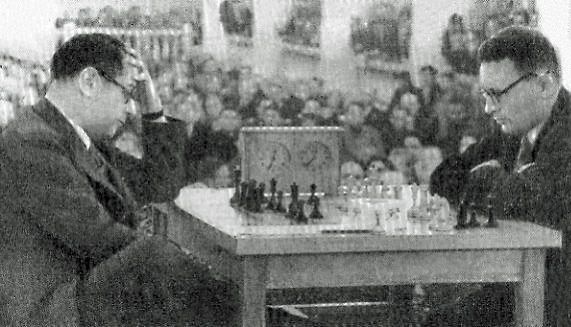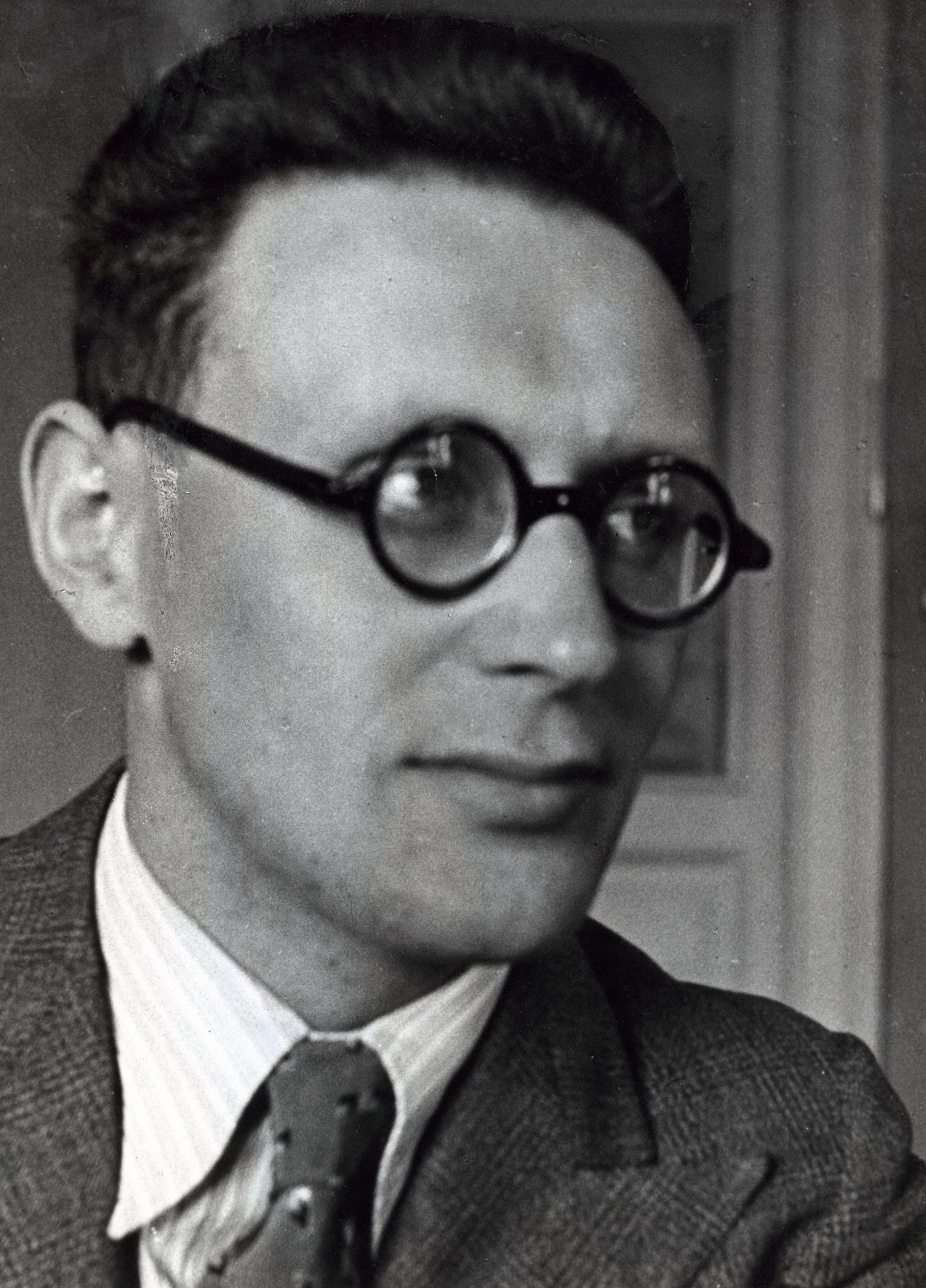GM Mikhail Botvinnik

Bio
Mikhail Botvinnik was a Soviet and Russian grandmaster, and the sixth World Chess Champion (1948-1963). He held the world champion title for close to 15 years (with two brief breaks in 1957 and 1960), and played chess at its highest level for over 30 years. Botvinnik is widely accepted as one of the strongest players of all time, and is known as the father of the Soviet Chess School. His students include World Champions Anatoly Karpov, Garry Kasparov and Vladimir Kramnik (as well as many other Grandmasters).
- Playing Style
- From Amateur to Soviet Champion
- Contender/War Years
- World Champion
- Life After the Title
- Legacy
Playing Style
Botvinnik’s playing style was dictated by iron logic. He was very strong and well-rounded in all aspects of the game, with a focus on methodical and long-term strategic play. Botvinnik viewed himself as having a "universal style", which he could change according to who he was facing. He was not afraid of any type of position, and would often seek complications and unclear positions. Here is a classic attacking example from a very young Botvinnik:
From Amateur to Soviet Champion
Botvinnik learned chess at the age of 12, and two years later he defeated World Champion Jose Raul Capablanca in a simultaneous exhibition game. His chess continued to improve quickly during his teenage years. In 1927, he placed 5th in the Soviet Union Championships and earned his National Master title (at the age of 16). In 1930, he won the Leningrad Championship, his first major title. His game was extremely mature by the age of 20, and he won his first Soviet Championship in 1931. Here is an example of his play from this tournament - he mixes positional ideas, tactical strikes, and crystal clear endgame technique perfectly:
Contender/War Years
After becoming Soviet champion, Botvinnik's rise to prominence began. He improved his overall game between 1931 and 1935, becoming one of the best players in the world. In 1935, he shared first place in the second Moscow international tournament with Salo Flohr, 1/2 a point ahead of Lasker and a full point ahead of Capablanca. In 1936, he shared first place in Nottingham with Capablanca, 1/2 a point ahead of current World Champion Max Euwe and one point ahead of Alexander Alekhine, Samuel Reshevsky, and Reuben Fine.

In 1938, he challenged World Champion Alekhine to a match for the title, which was accepted. Unfortunately, the rumblings of World War II and some other political factors put an end to this match. From 1939-1945, Botvinnik was unable to take part in International chess tournaments. He still played in the Soviet Union during this time, but much less often. In 1940, he won the tournament that crowned the Absolute Champion of the USSR, ahead of Smyslov, Keres and others. In 1943 he won another strong tournament in the USSR, ahead of Smyslov, Ragozin and others. Botvinnik would also win the 1944 and 1945 Soviet Champiionships.
After World War II had ended, Botvinnik won the international tournament in Groningen in 1946 (ahead of Euwe and Smyslov). By this time, Botvinnik was viewed by most as the rightful challenger to Alekhine. Botvinnik reached out to Alekhine and the British Chess Federation in an attempt to host a world championship match - but these talks were all cut short by Alekhine's death in 1946. This was the first time (and only time in the current history of chess) that the world champion had passed away while holding the title.
World Champion
The chess world and many chess federations agreed that the new world champion would be the winner of an invitational tournament to be held in 1948. This event is historic because it crowned a new world champion, but also because it was the first time that FIDE would oversee the World Championship tournament and declare the rules for the events (something that FIDE still does to this day). Botvinnik was the favorite to win the 1948 World Championship tournament, and he did not disappoint. He finished in clear first, 3 points ahead of the field (which included Smyslov, Keres, Reshevsky, and Euwe). Subsequently, Botvinnik was crowned world champion.

Upon becoming world champion in 1948, the new rules for the world championship had been declared by FIDE: There would be a title match every three years, and in the event that the world champion would lose the title, he would be granted a re-match in the following year. Also, in the event of a drawn match, the champion would retain the title. These rules suited Botvinnik very well.
Botvinnik defended his world championship title for the first time in 1951, by drawing the match 12-12 with challenger David Bronstein. The 1951 Botvinnik-Bronstein match is ranked at #8 in the top ten matches of all time. In 1954, Botvinnik defended his title again by drawing the match 12-12 with Challenger Vassily Smyslov. It wasn't until the 1957 World Championship match against Smyslov that Botvinnik was actually defeated. Botvinnik claimed his right to a rematch, which he won convincingly in 1958 to win back the world championship title.
In 1960, Botvinnik faced a young Mikhail Tal for the world championship, and was beaten convincingly. The 1960 Tal-Botvinnik match is ranked #6 in the top ten matches of all time. After losing to Tal, Botvinnik opted for a rematch in 1961. In their second match Botvinnik defeated Tal by a score of 13-8, and regained his title. Here is an example game from the rematch vs Tal, where Botvinnik seems to be playing like Tal!
Life After the Title
In 1963, Botvinnik lost to Tigran Petrosian in the world championship match. At this point, the rules for a rematch had changed and Botvinnik was no longer allowed to simply get a rematch in the following year - he would have had to compete in the candidates cycle. The loss to Petrosian marked Botvinnik's reign as world champion. Botvinnik continued playing in tournaments until his retirement from competitive chess in 1970. He had good results and many memorable games in his late career. Here is a fantastic attacking example from this time period vs GM Portisch, where black's king cannot escape and every white piece is taking part in the attack!
In 1963, Botvinnik founded his chess school, along with other Soviet trainers. This school would produce 3 world champions (Kasparov, Karpov and Kramnik), and other notable grandmasters (Shirov, Serper, Akopian and Ehlvest). In this school he imparted the importance of moderate physical exercise, the ability to analyze games, and knowing your opening repertoire extremely well. Botvinnik's blueprint for chess success was used for decades by the Soviet system, and is a large reason why the Soviets dominated the chess world championship from 1948-2000.
Legacy
Botvinnik's legacy towers over the chess world. His contributions to opening theory alone would make him a chess legend. He has variations of the English, Slav, Caro-Kann, and the Queen's gambit named after him, and he shaped many other opening variations as well (e.g. the French Winawer variation, the Dutch stonewall, Caro-Kann classical variation). The most interesting pattern to be seen in most of Botvinnik's opening innovations is the idea that none of them focus on tactics - instead Botvinnik would attempt to create situations with a long-lasting positional edge. His reasoning for this was simple: tactical surprises are only good once!
Apart from being considered by many to be the most influential chess coach / trainer in history, he is also considered one of the top players of all time and a pioneer for computer chess. It is for these reasons, and more, that Botvinnik is known around the world as one of the greatest world champions in history.



